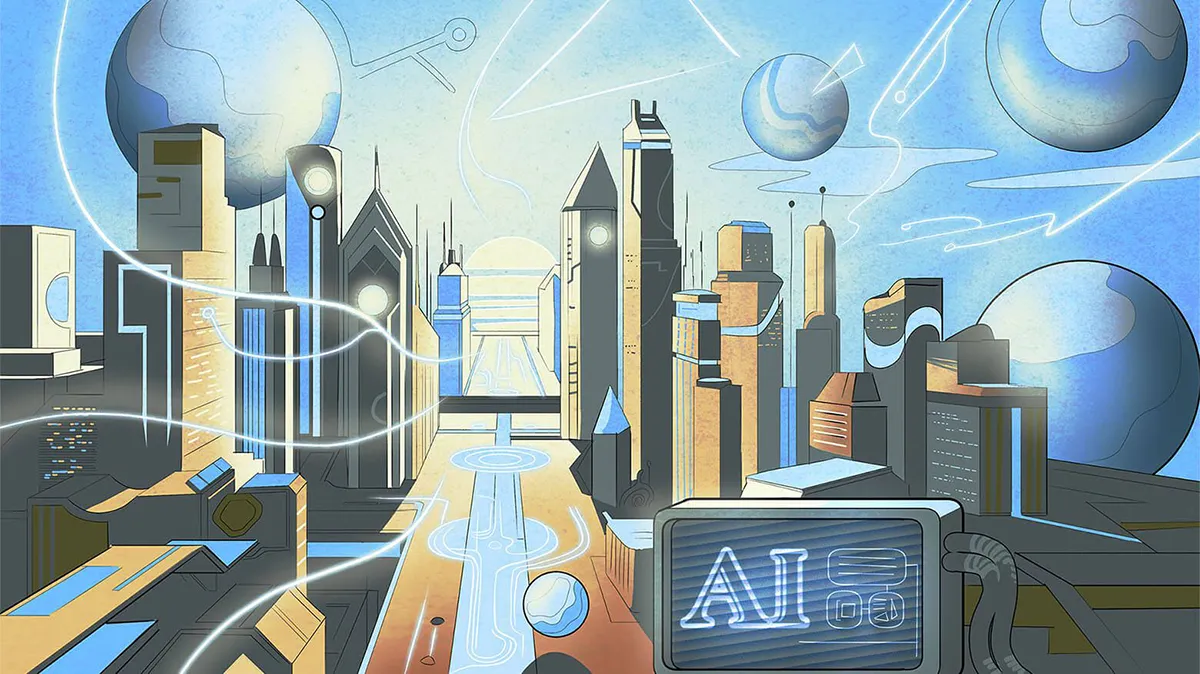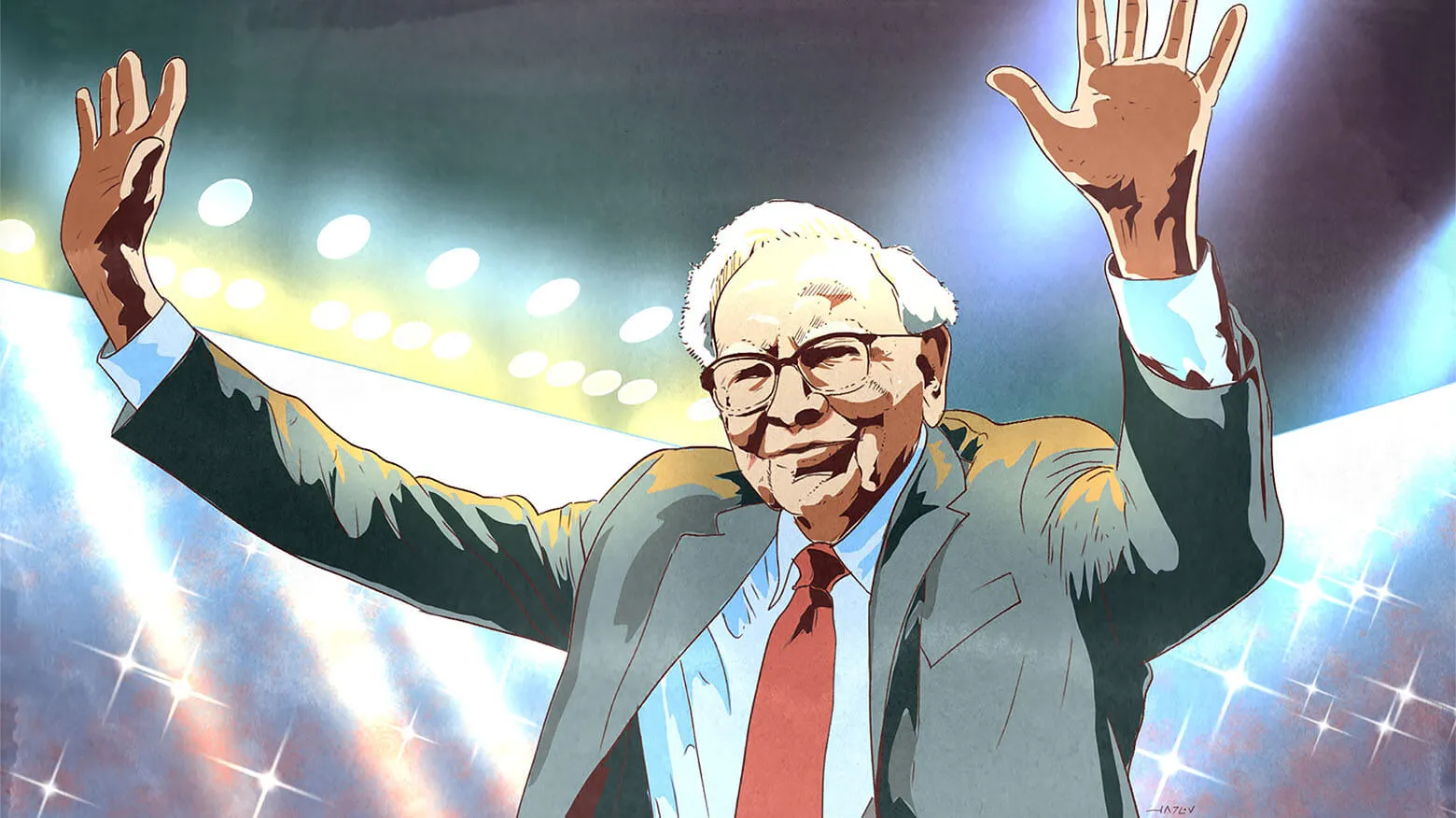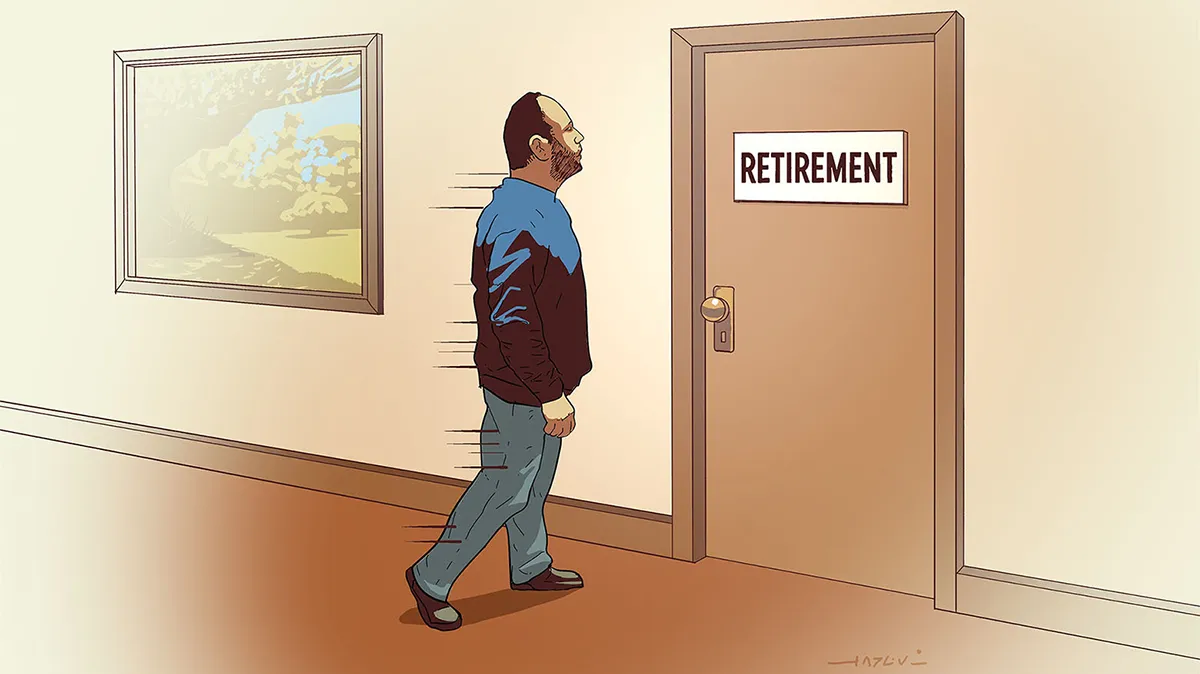Today, I will share the final part of what has become a five-part summer letter to IMA clients. The letter is quite lengthy, so for easier reading, I have divided it into smaller parts. In the previous four parts, I discussed the economy, the Magnificent 7, past booms and busts and EVs. In this part, I will discuss AI from the following question:
Question: AI is changing a number of industries. Citi released a report predicting that 54% of jobs in the banking industry could be automated with AI. How is IMA able to invest in a way to take advantage of AI disruption?
In these client letters, I am not selling anything; they are written to IMA clients, who have already bought into what we are doing. I don’t like sanitizing my letters (rewriting them into articles), as I don’t learn anything from doing it, so I am leaving them as I wrote them.
The AI Revolution
Now, let’s look at AI.
Let’s state the obvious: The discussion of AI quickly falls into a domain bordering on Sci-Fi. My thoughts here are only marginally shaped by scientific facts.
If you look at technological progress over the centuries through the lens of productivity, the improvement was tiny, barely noticeable. Our ability to do the same tasks maybe improved a few basis points a year for millennia. People figured out fire, learned how to use levers, created a wheel.
Then the pace of technological progress started to accelerate with the first and second industrial revolutions – steam engine, internal combustion engine, electricity, microprocessors, internet – productivity went from improving a few percent a century to a few percent a year. The beauty of productivity growth is that it is the magic that improves our lives. Technology allows us to spend fewer resources as we grow tomatoes and build new houses.
Serendipitously, as I was typing this I received an email from Edward Chancellor, who, in his article titled “The Trouble with Prosperity,” argues that productivity growth has slowed down to 1% from 3% since the 1970s. Edward thinks that the main causes were: (1) prosperity – the wealthier we get, the less hard we want to work, (2) the larger role governments play in the economy (Western governments have run deficits for nearly fifty years), and (3) regulation – it is up tenfold.
I hope AI can reverse this. Back to the future.
I have been battling between two conflicting frameworks here.
On one side, the technological progress we observed over the last hundred years has changed the nature of employment. We used to have one-third of the population working on farms, but today only a tiny percentage work there – a single combine replaces dozens of workers.
I am quite sure that this transition was painful for many farmers, but it was positive for society as a whole. While a transition happens, we can only see the jobs we will lose but don’t yet know the jobs that will be created, because those occupations are yet to be invented. Just look how many jobs that we take for granted today did not exist 50 or 100 years ago – laparoscopic surgeon, data scientist, Chief Listening Officer – I kid you not, this one was suggested by ChatGPT (maybe it can see the future).
On another side, as Larry Summers pointed out, the biggest difference between AI and all other advancements is that “the wheel cannot create another wheel” but AI can build AI. There’s a good chance that AI will add exponentially to growth – the rate of productivity growth can accelerate. Again, I am in the Sci-Fi, not Sci-Fact, domain.
AI’s Impact on the Job Market
Most technological improvements of the past have attacked blue-collar jobs. The only exception I can think of is Xerox replacing typing pools – rooms of women were replaced by a single copy machine. AI is “collar-blind”, as it is coming for both blue- and white-collar jobs. I wanted to say that repetitive, pattern-recognition tasks are going to be swallowed by AI. But ChatGPT showed that AI can generate content, and thus creative jobs are not safe, either. At least it is going to increase productive output. In other words, powered by AI tools, a designer will be able to do the job of two or … pick a number.
Add AI to robots and automation, and warehouses are only going to have humans turning the “on” switch. AI’s attack on blue-collar jobs doesn’t require much imagination; Amazon and others are fast moving that way. Robots will start stocking shelves at supermarkets at night. Amazon warehouse workers who are complaining that they have to walk ten miles a day will start complaining that Netflix ran out of new movies for them to watch, as bots will be doing all the walking and shipping while they are unemployed, flipping channels.
The composition of skills in the US will change over time – low-skilled labor will have a hard time finding a job. (Plumbers, electricians and other tactile skilled jobs have infinite security.) Today we are importing a lot of low-skilled labor through legal and illegal immigration to the US. A decade from now these people will have a hard time finding work. (That’s not a political observation but an economic one.)
Uber and the Threat of Robotaxis
As of now, only one company in our portfolio faces potential disruption by AI – Uber. The threat lies in the hypothetical scenario where millions of robotaxis suddenly appear on the roads. Uber’s value stems from its fragmented, two-sided network. If the car supply on the street becomes dominated by a few large conglomerates (like Tesla or rental car companies, for instance), Uber’s value proposition diminishes significantly.
However, robotaxis remain more science fiction than fact at this point. The technology isn’t quite there yet, functioning only in limited, discrete areas. While Tesla’s self-driving software has made significant strides recently, we’re far from the point where consumers would feel safe inputting their destination and then losing themselves in TikTok for the journey.
Self-driving technology relies heavily on sensors, which have limitations. For instance, my Tesla’s drive assist becomes inoperable in rain or snow, when cameras can’t clearly see the road. Moreover, there’s a trust factor: Many of us would gladly pay a premium for the assurance of a human driver getting us safely from point A to B, rather than risking an empty, self-driving car. The legal framework for self-driving vehicles is also nonexistent. In the event of an accident, who bears responsibility – this robotaxi or that one?
A standalone Tesla robotaxi service is unlikely to succeed. Tesla will struggle to maintain a deep pool of supply on their own, further reinforcing the value of Uber’s established network. Consumers aren’t specifically seeking robotaxis; they want reliable transportation that arrives quickly (key word) when summoned.
As robotaxis gradually begin to appear on roads in the coming years, they’ll probably become another option on the Uber app (rather than operate independently), alongside the UberX, Comfort, or Luxury selections.
Societal Implications of AI
What will the economy and society look like when AI has taken over the office and bots are running everything else? Let’s say we institute some kind of basic income system and now people don’t have to work. What is that going to do to our society? Will people lose the meaning in their lives that today is fulfilled by working?
But maybe I am looking too far into the future. In the meantime, it is a given that AI will bring big change.
I tell my kids that it’s not what AI will bring to us that will matter, but what we’ll bring to AI. Our job is to be open-minded, embrace AI, and not see it as a threat but as a friend. It’s going to happen whether we like it and embrace it or not, so we may as well benefit from it.
From an investment perspective, we have a long list of companies from robotics to automation to energy that will benefit from AI. The issue is that today they are fully valued, like the rest of the market.
By Jonah Katsenelson
Key takeaways
- The AI revolution represents a potential leap in productivity growth, possibly reversing the slowdown observed since the 1970s and accelerating technological progress exponentially.
- Unlike previous technological advancements, the AI revolution is “collar-blind,” affecting both blue- and white-collar jobs, including creative professions, which could lead to significant changes in the job market and skill requirements.
- The impact of the AI revolution on specific industries, like transportation (e.g., Uber and potential robotaxis), remains uncertain due to technological, trust, and regulatory challenges.
- The AI revolution raises profound questions about the future of work, societal structure, and personal fulfillment, potentially necessitating new economic models like universal basic income.
- From an investment perspective, while many companies stand to benefit from the AI revolution, current market valuations make it challenging to find undervalued opportunities in this space.









A good framework for thinking about AI is the book “Co-Intelligence” by Ethan Mollick. He teaches at Wharton and sees AI as a tool we need to learn to use.
Love this. The observation about Uber making a self-driving option alongside Black, XL, etc. makes a lot of sense to me. I wonder if they will upsell it as a luxury/novelty or, more prudently, sell it at a discount at least until people get comfortable with it. There’s no way I’d pay more for something that I know is really about saving them money and the hassle of dealing with human drivers. But, then, I don’t pay up for XL or Black either, unless I am under a time constraint, get a deal or am using a voucher somebody provided me. Most of my Uber trips are so short, after all it seems wasteful to pay up to spend 20 minutes in an Escalade when the memories of cramming myself into the back of a Camry will fade soon enough.
Very interesting read. Regarding the machine take over of the family farm. I’m not so sure it was better for society. I just listened to RFKs explanation of the pork industry takeover by one company and the cruel industrialization of pig farming. Our food has become more and more unhealthy and frankly is making us all fat. Gluttony and a general lack of self control needs to stop in America or we will all lose our edge.
Goodness !
Man’s fragile psyche; so many derive self worth from work. Universal Income?
Transitioning thought- I believe the true power of AI is in the data (literally quantity and quality).
This article by Dean W. Ball in New Atlantis magazine, may contribute to the discussion:
https://www.thenewatlantis.com/publications/the-era-of-predictive-ai-is-almost-over
This article is probably not behind a paywall, but please accept my apology if it is..
I suggest reading The Coming Wave by Mustafa Suleyman (the cofounder of the AI company Deepmind) to get a glimpse of the future of AI. The book is an urgent warning about AI’s potential risks as well as a roadmap for containing what could be the biggest technological mistake of humanity.
I watch a couple of commentary/opinion TV shows where up to five people engage in rapid fire discussions, with lots of back and forth. I am hard of hearing, so I use closed captions as I cannot hear the discussions well. Closed captions on such fast paced TV shows are terrible. They make a hodge-podge many words, suffer random delays, and cannot keep pace with the ongoing conversations. I will believe the AI hype when I see that AI can produce accurate and timely closed captions…..which should be a very simple task.
In the last 30 years we have had 1) the computer revolution (computer on every desk) 2) the connectivity revolution – internet allowing folks to find info and mobile allowing people to connect and share. As middle aged folks, you and I have both lived in a time when we didn’t have personal computers & today our kids can’t fathom a time when they couldn’t immediately “search”.
Now with AI we are in the early stages of the Cognition Revolution/Intelligence Revolution.
The genie is out of the bottle. It’s not going back in. Thus, if AI is here to stay, what are the investment opportunities? If we think of what became possible investable because of computer for every house/person or because of ability to have websites, there was a lot of hype but there were lots of opportunities.
With the Mag 7, opportunity is already priced in. Where opportunity exists is in verticals with domain expertise. Mag 7 are generally horizontal players. The great applications with AI are not necessarily built yet – we are in early days – prior to Nov 2022, I’d guess that <0.1% of population knew what LLMs were. AI's in particular verticals will help humans do better, faster, more efficient work. Landscape of work continues to change. It's a trend that has been going on for hundreds of years – now accelerated.
Have 2 comments: 1/ likely driver for reduced productivity % would be law of diminishing returns, as your base becomes larger… it’s a big step from horse to car, but a smaller from car to faster car with airco… 2/ robotaxis, sure they’ll be another option, but I think the real driver will be that they can be significantly cheaper than a regular Uber, due to labor. this would in return make that all transport will quickly become robotaxi… as users will only go for cheapest transport if performance is identical (and i would argue robotaxis will be safer with less human error at some point). ps: i never invested in Tesla
The key issue relates to the question originally posed as “How is IMA able to invest in a way to take advantage of AI disruption?” Your answer is that the market (and the AI investment opportunities) are fully valued. I submit that if AI technology is truly as revolutionary as many (some?) believe, getting too caught up in P/E ratios and 2025/2026 estimated revenues and earnings would be short-sighted. Yes, the market isn’t cheap and pull-backs, perhaps significant corrections, can always happen, but the technology companies that are able to push AI out into the world will leapfrog ahead of the market. Personally, I focus on semiconductors, as they seem to be the most direct (albeit volatile) way to leverage the AI-enhanced future.
First, my understanding of Uber was that it was created as a bridge to self-driving cars. In the meantime, Waymo has done over 50,000 rides without an accident. I have seen them carrying folks with no driver in Santa Monica. They have also been doing the same thing in SF, successfully. Waymo uses lidar and radar, unlike Tesla’s cameras, which, as you point out, don’t work in rain and snow. Is self-driving closer than you think?
I understand your excitement, but I still worry about the political implications of AI. I fear the same people on the Red State side of the Ref State Blue State divide, Hillary’s deplorables, will see the threat not the opportunity. We can’t just say we are going to take away you mundane jobs, but don’t worry, there will be better jobs you need to train for. That didn’t work so well when we exported manufacturing jobs to China & Mexico. We need solutions for people we displace, and we need to outline them before we displace those jobs. I’m not worried you kids or my kids, I’m worried about folks in Ohio & West Virginia.